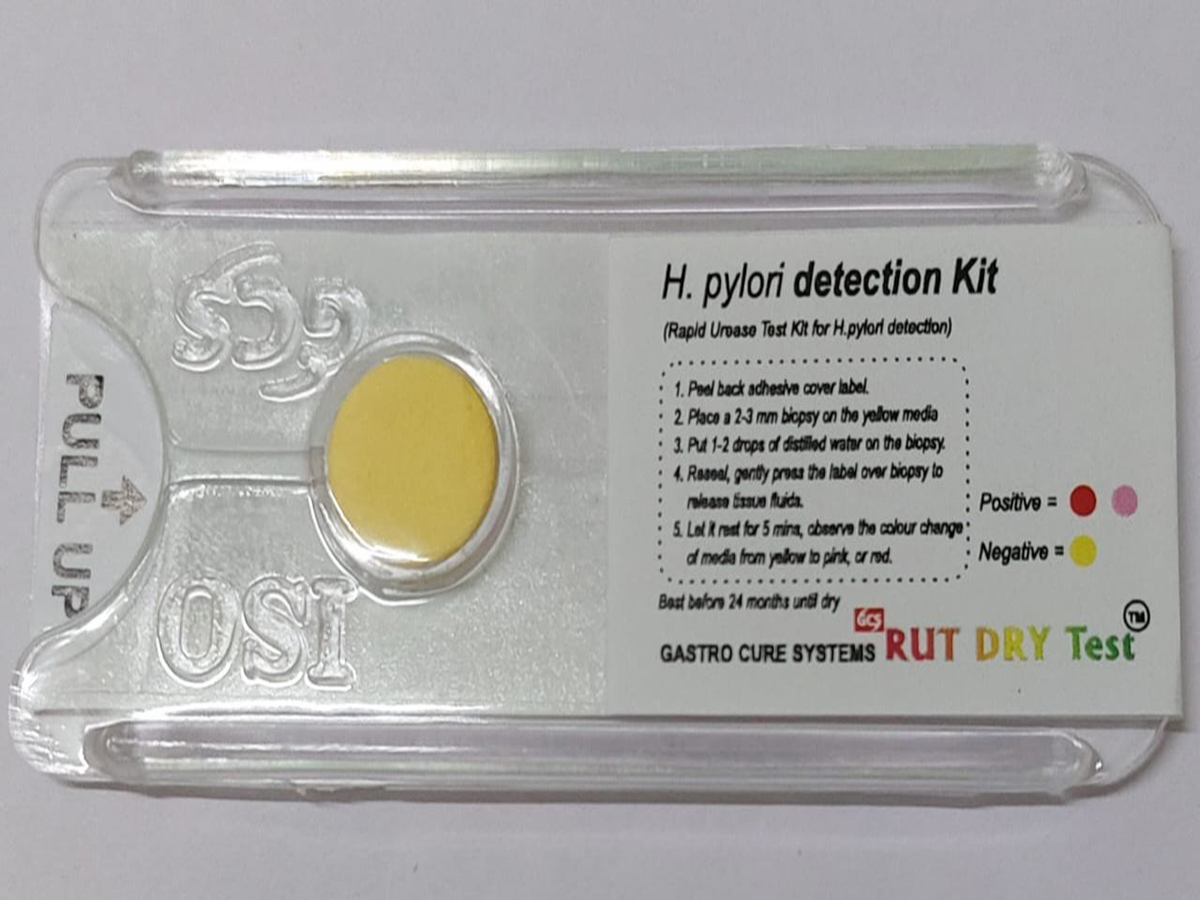H. pylori Detection Tests

Helicobacter pylori (H. pylori) detection tests are diagnostic tools used to identify the presence of H. pylori, a bacteria that infects the stomach lining and is associated with conditions such as gastritis, peptic ulcers, and an increased risk of stomach cancer. Detecting H. pylori is crucial for diagnosing and treating infections, which can often be cleared with antibiotics and acid-suppressing medications.
Common H. pylori Detection Tests:
Urea Breath Test (UBT):
- How it works: The patient ingests a urea solution containing carbon isotopes (radioactive or non-radioactive). H. pylori breaks down the urea, releasing carbon dioxide that is absorbed into the blood and exhaled through the lungs. The exhaled carbon dioxide is then measured to detect the presence of the bacteria.
- Accuracy: Highly accurate and commonly used for diagnosis and post-treatment follow-up.
- Preparation: Patients must avoid antibiotics, proton pump inhibitors (PPIs), and certain foods before the test for accurate results.
Stool Antigen Test:
- How it works: This test detects H. pylori antigens (foreign proteins associated with the bacteria) in a stool sample.
- Accuracy: Reliable for diagnosing active infection and for confirming the eradication of the bacteria after treatment.
- Preparation: Similar to the breath test, patients should avoid antibiotics and PPIs for some time before the test to prevent false-negative results.
Blood Antibody Test:
- How it works: This test looks for antibodies (immune proteins) in the blood that the body produces in response to H. pylori infection.
- Accuracy: This test can indicate whether a person has been exposed to H. pylori, but it is less useful for detecting current infection, as antibodies can remain in the bloodstream even after the infection has been cleared.
- Usage: Generally less favored for active diagnosis; often used in settings where other testing methods are unavailable.
Endoscopy with Biopsy (Histology, Rapid Urease Test):
- How it works: During an upper endoscopy, a small tissue sample (biopsy) is taken from the stomach lining and tested for H. pylori. The biopsy can be evaluated microscopically (histology) or tested using a rapid urease test (the biopsy is placed in a urea solution, and if H. pylori is present, it breaks down the urea and changes the color of the solution).
- Accuracy: Very accurate, especially for diagnosing infections when other methods are inconclusive.
- Usage: Used when an upper endoscopy is indicated for other reasons (e.g., evaluating ulcers or gastritis).
Advantages and Considerations:
- Urea Breath Test: Non-invasive, accurate, and quick results, but requires patient preparation (e.g., avoiding certain medications).
- Stool Antigen Test: Non-invasive and can be done at home, but handling stool samples may be less convenient for patients.
- Blood Antibody Test: Widely available, but not useful for determining current infection or successful eradication post-treatment.
- Endoscopy with Biopsy: Invasive but provides direct and detailed diagnostic information.
When to Test:
- Gastrointestinal Symptoms: Testing is often recommended if a patient has symptoms like recurrent stomach pain, ulcers, indigestion, or unexplained weight loss.
- Follow-up Testing: After treatment for H. pylori, a test like the urea breath test or stool antigen test may be done to confirm eradication of the bacteria.
Would you like more details on any specific test or how they are interpreted?